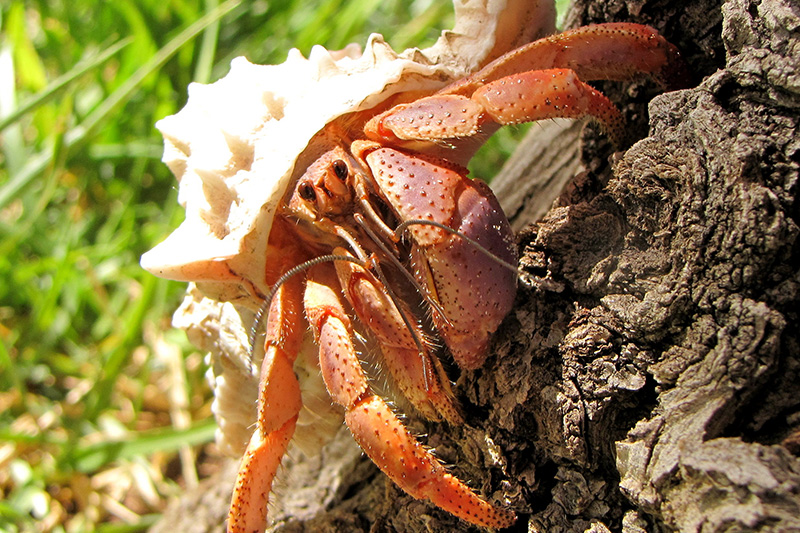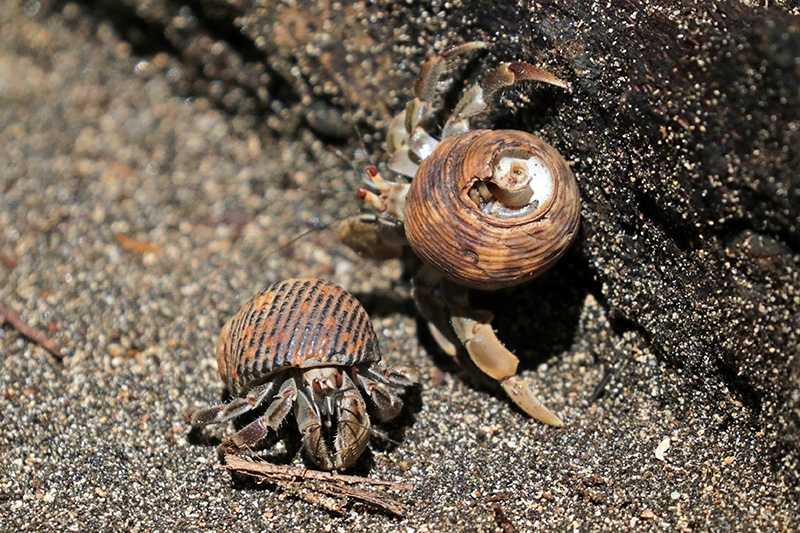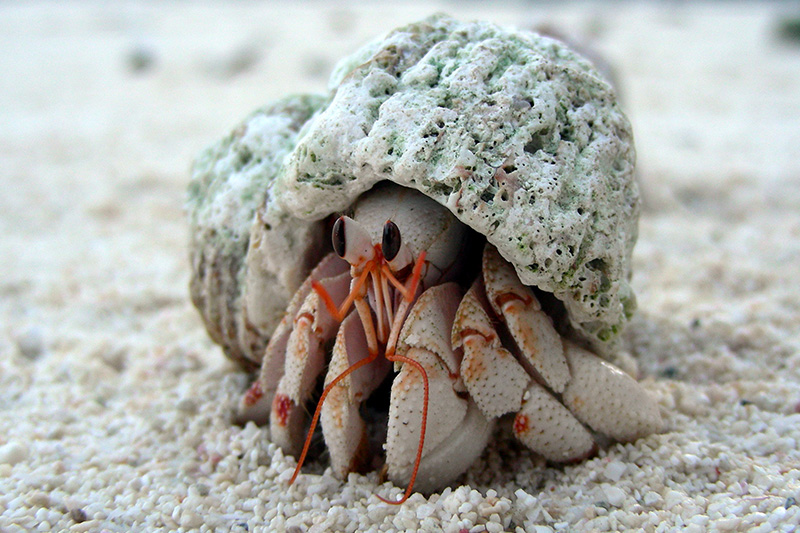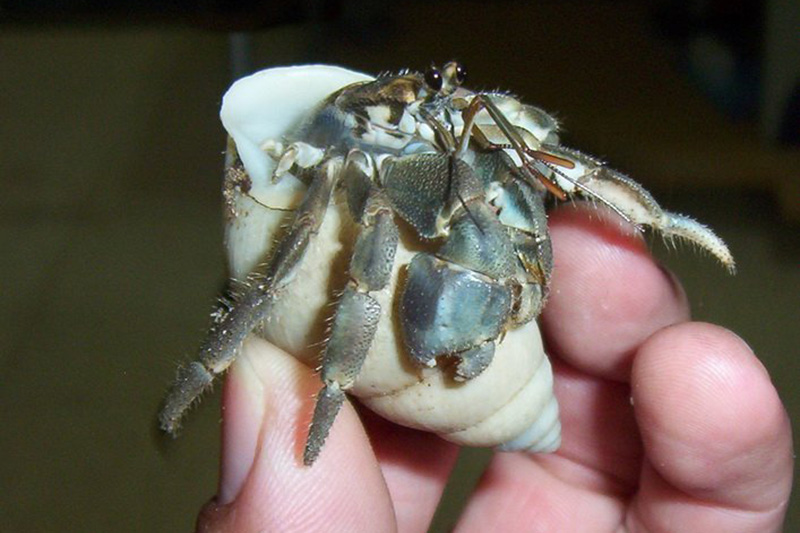Did you know that hermit crabs have many different species? But only a few of them are sold commercially as pets. This guide will feature the common land hermit crab species, from the common ones to rare ones sold in pet stores.
Two of the most common species of hermit crabs are the following: Caribbean crab – scientific name: Coenobita clypeatus and the Ecuadorian crab – scientific name: Coenobita compressus. These two species look different from each other so don’t worry about them getting mixed up.
The other species of land hermit crabs are the following:
- Strawberry Hermit Crab – Scientific name: Coenobita perlatus
- Passionfruit Hermit Crab – Scientific name: Coenobita cavipes
- Ruggie Hermit Crab – Scientific name: Coenobita rugosus
- Indonesian Hermit Crab – Scientific name: Coenobita brevimanus
Caribbean Crab (Coenobita clypeatus)

It has lots of nicknames such as “the purple pincher crab”, “tree crab”, and “soldier crab”. Caribbean Crab features purple or brown legs with little colors of orange or red. And they also have a tan head and often you will notice they have a dark spot on them. You can easily distinguish them apart from Ecuadorian Crabs because they have round eyes while Ecuadorian Crabs have more elongated ones.
Their claws are purple and huge as well with usually light-colored tips on them. Their armor is highly noticeable due to their orange colors and their yellow leg that fits around their claw too which is deeper in color compared to the other legs.
These hermit crabs love shells that have round openings in them.
Ecuadorian Crab (Coenobita compressus)

Also known as “Eccie”, Ecuadorian Crabs’ colors range from tan, orange, yellow, and gray and rare instances bluish color. They also have noticeable stripings on the sides of their head, as mentioned above they have elongated eyes and a lot wider, and a flat thorax.
In addition, they are more active compared to Caribbean Crabs. In terms of their behavior on switching shells, they are mostly reluctant. So when they are in their molting phase you’ll notice that they won’t change their shells.
Important note:
Compared to Caribbean Crabs that live and survive inland, Ecuadorian hermit crabs live on the Pacific seashore that means they need salt on their water so they can metabolize. In fact, they just don’t need it to metabolize, they also need it to survive.
So if you’re planning to have Ecuadorian Crab as a pet, remember to put fresh & saltwater in your hermit crab’s terrarium. If you don’t have one in your home, synthetic sea salt is widely available in common pet stores.
Strawberry Hermit Crab (Coenobita perlatus)

They are probably the easiest hermit crab species to identify. They are called strawberry crab for a reason – their whole body is like a bright strawberry red with spots on them. Just like a strawberry!
However, it’s important to remember that their vibrant color depends on what they eat. If they don’t get enough carotene on their diet their color will wash out when they enter their molting phase.
Important note:
Of all the hermit crabs going to be discussed here, Strawberry Hermit Crabs are not newbie-friendly due to their maintenance which requires plenty of space for them to roam around and lots of seawater as well. Same as Caribbean Crabs, they prefer turbo shells as well or shells that have a round opening in them.
Passion Fruit Hermit Crab (Coenobita cavipes)

These hermit crabs can be found in parts of Africa, Indonesia, Philippines, China, Japan, Malaysia, Taiwan, Polynesia, and Micronesia. They use the hard part of Passion Fruit as a shell hence they are called “Passion Fruit Hermit Crab”.
They can be identified with their purple or orange colors on their body and also their bright red eye-stalks. Their claws are big as well and they have stripes on them. Passion Fruit hermit crabs are particular as well in choosing their shells, and they prefer the following – snail shells, murex shells, and shells with D-shaped openings.
Ruggie Hermit Crab (Coenobita rugosus)

Ruggies can be found in parts of Indonesia, Australia and the East African coast to the Southwest Pacific.
Ruggie Hermit Crabs look identical to Ecuadorian hermit crabs. Their key differences are Ruggies appear in a variety of colors such as peach, white, blue, black, tan, and gray. Same as Ecuadorian hermit crabs, Ruggies have the same elongated eyes with stripes on the sides of their body.
Indonesian Hermit Crab (Coenobita brevimanus)

And lastly, the Indonesian Hermit Crab. Their body is heavily armored for protection and they have a thick exoskeleton as well which helps to minimize the loss of water through evaporation. They are not difficult to identify from other hermit crabs, just check if they have narrow and dark eyestalks. And a huge lilac-colored purple pincher as well.
